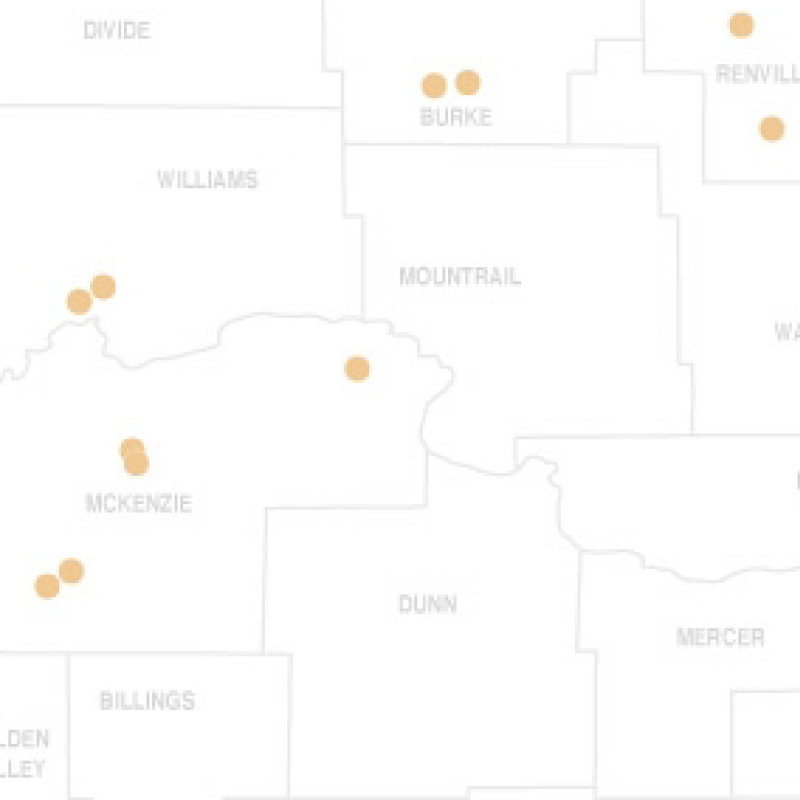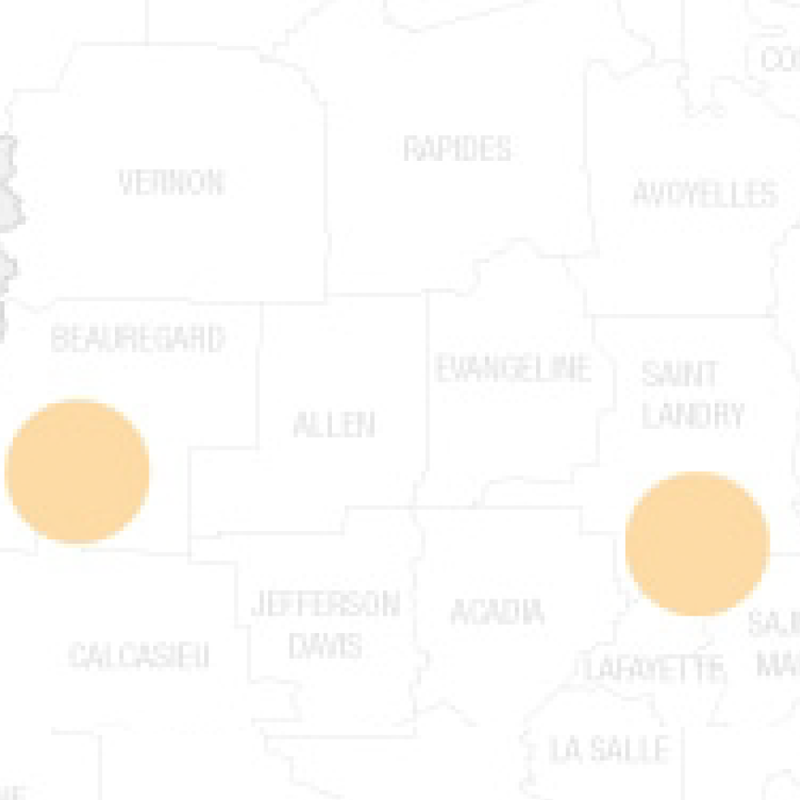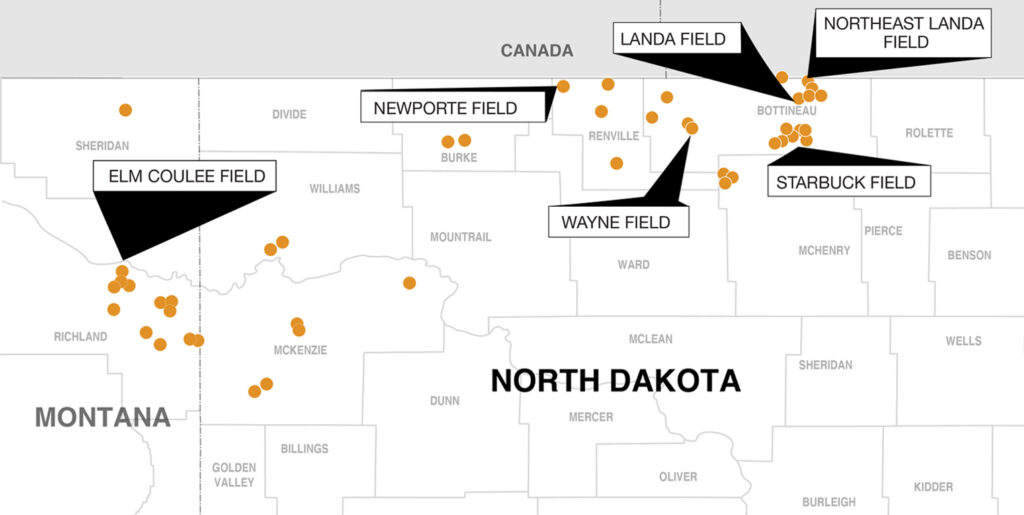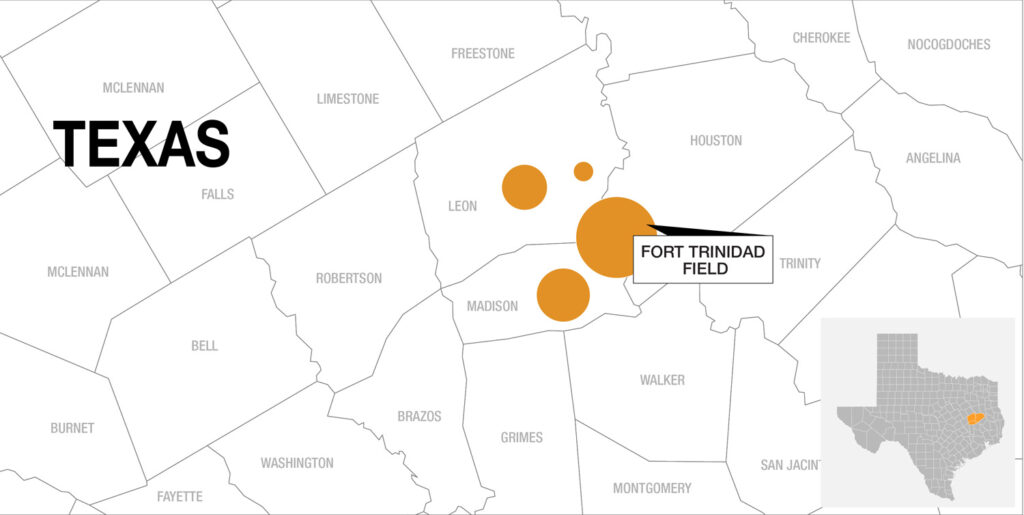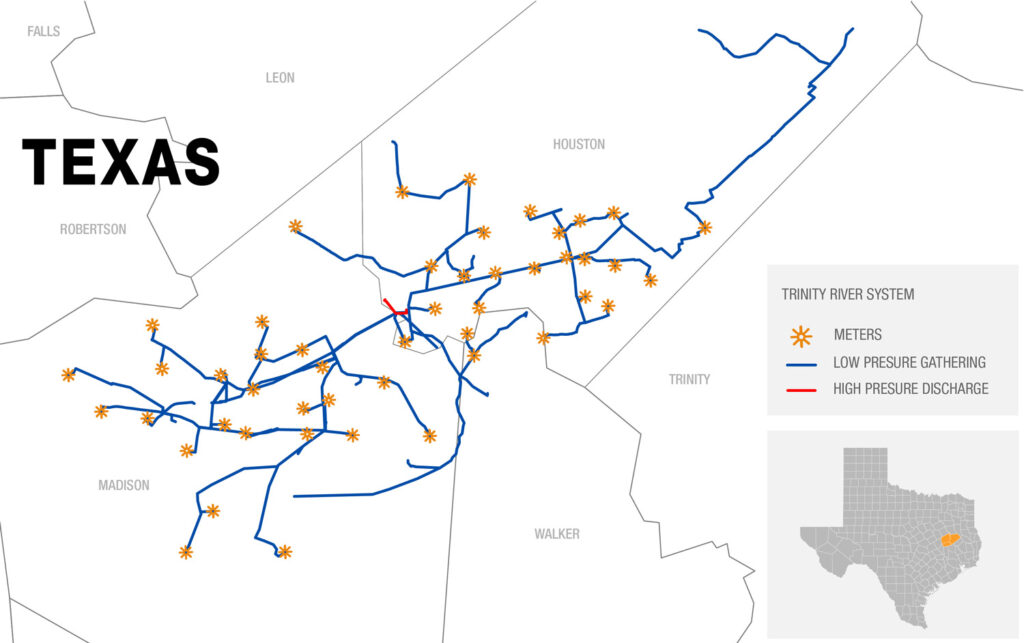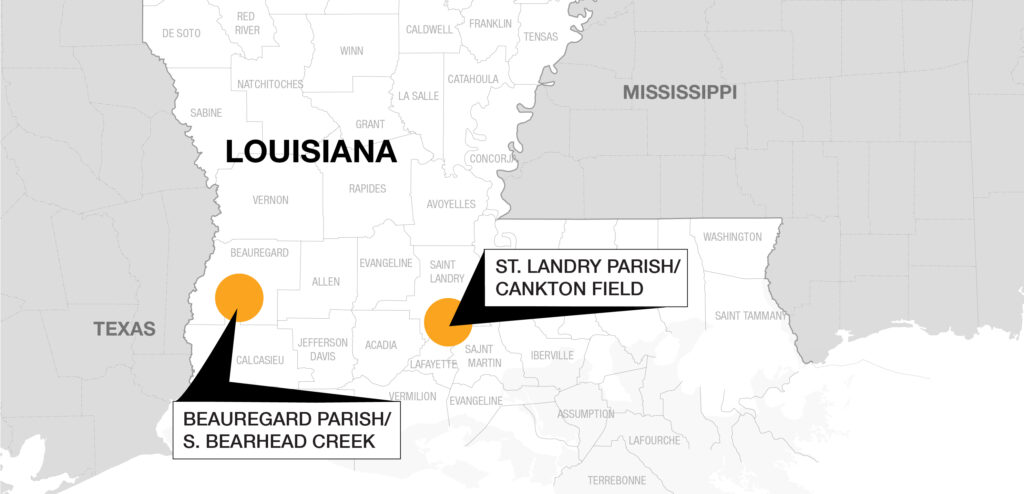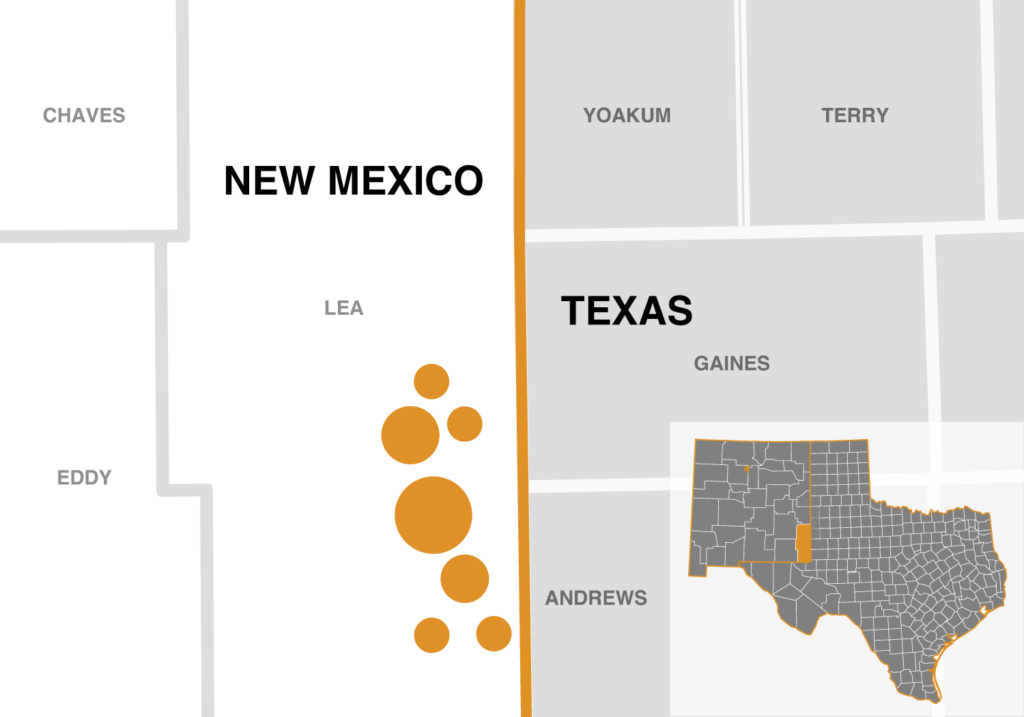Operations
Empire Petroleum Corporation is a conventional oil and natural gas producer with a main focus in the US onshore. The company possesses long-life, low operational cost, mature, producing assets with slow decline profiles in the Permian Basin, Bakken region and central Gulf Coast region, in the states of New Mexico, North Dakota/Montana, Louisiana and Texas.
EMPIRE ROCKIES
- Production from the Mississippian age Madison Formation, more specifically the Spearfish and Mission Canyon zones. As you move west into Montana, in addition to the Madison, production also is derived from the Bakken, Duperow and Red River Formations.
- Impressive, near-flat production rates over last five years
- Operational improvements on three sub-optimally managed waterflood fields
- Opportunity for shallow horizontal development of legacy Madison fields in North Dakota and Montana with direct offset horizontal analog wells
EMPIRE TEXAS
- Concentrated acreage and stacked pay in the historically prolific East Texas Basin with over 27,000 net acres held by production (HBP)
- Field office in Madisonville, Texas holds an expansive library of regional geologic and geophysical data and analysis and proprietary 3-D seismic data that covers a majority of the acreage
- Principal producing asset (~18,000 acres) is highly concentrated in the Fort Trinidad Field in Houston & Madison Counties, Texas with high working interest and historical production from over eight separate Cretaceous formations
- Operations in the Ft. Trinidad Field include a 77-mile gas gathering system and SWD system
EMPIRE LOUISIANA
- Oil weighted production from legacy assets in Louisiana
- Oil and gas production from mostly Miocene formations in St. Landry Parish. In Beauregard Parish production is derived from Frio, Cockfield and Wilcox formations (fewer than 10 wells).
- 9 producing (100% operated) and 3 SWD wells
- High working interest and operational control
EMPIRE NEW MEXICO
- Contiguous and consolidated acreage position consisting of 48,000 gross and 40,000 net acres held by production (HBP) from >700 wells
- Primary producing formation is the Grayburg/San Andres
- Other producing formations include: Queen-Seven Rivers-Yates, Devonian, Abo, Blinebry, Tubb and Drinkard
- Field was discovered in 1929 by Continental Oil’s Lockhart “B-31” and converted to a waterflood unit in 1984 drilled on 40-acre spacing
- Empire owns a high working interest position in the field at an average WI of 77% and NRI of 67% (87% ANRI)
- 100% operated position including Eunice Monument South Unit, Eunice Monument South Unit-B and Arrowhead Grayburg Unit
- 14 royalty wells on the asset
- Low decline rates in existing wells with future potential in the ROZ
